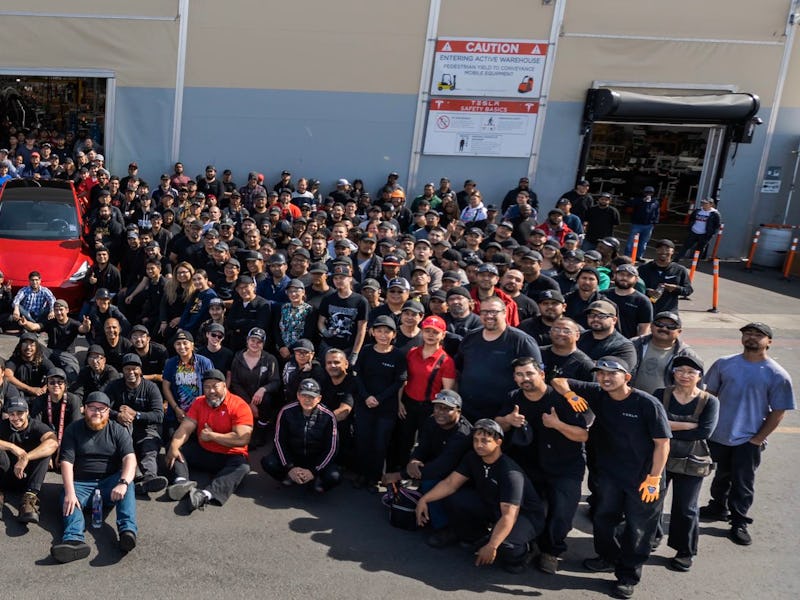Elon Musk reveals Tesla’s 1,000,000th car, and, OK, it is kinda cute
The company's milestone electric vehicle has rolled off the production line.

Tesla has finally reached the seven-figure mark, after CEO Elon Musk announced Tuesday that the company has shipped its one-millionth car.
In two images shared by Musk with his 32 million Twitter followers, the beaming CEO is flanked by members of staff celebrating the milestone electric vehicle. The car receiving the accolade appears to be a red Tesla Model Y Performance edition, owing to the 21-inch Überturbine wheels available exclusively as part of that vehicle's upgrade package. The standout design is just part of the winning formula that has helped Tesla, and electric cars in general, reach a wide audience.
The Model Y is part of Tesla's three-phase plan, outlined in 2016, to reach a broader audience by selling cheaper cars. This strategy also covers the Model 3 that hit roads in July 2017, and the Cybertruck set to hit roads late 2021. The car in the image, and the milestone, are both emblematic of the firm’s successful push toward a broader audience for electric cars.
Tesla's millionth car.
The milestone also helps advance one of Musk's stated aims, to transition the world onto more sustainable forms of fuel. When Tesla had sold 550,000 cars in April 2019, the company claimed it had saved over four million metric tons of carbon dioxide thanks to conventional driving. This was based on comparing the number of cars to conventional cars with an efficiency of 22 miles per gallon.
The Environmental Protection Agency's energy calculator also suggests Tesla's cars will save big on carbon emissions. It shows that one million passenger cars on the road, assuming the average efficiency of 22.3 miles per gallon, would produce 4.6 million metric tons of carbon dioxide per year. The equivalent figure for a Tesla would be dependent on factors like the electricity source.
It’s been a long journey to reach this stage of production. When Tesla launched the Roadster in 2008, it demonstrated that electric cars could be both fast and practical for road use. The Model S sedan in 2012 and Model X SUV in 2015 reached even further into the mainstream, but Tesla had still only sold around 250,000 cars when the Model 3 entered production. The company rapidly accelerated its factory efforts, in a period described by Musk as “production hell.” By the summer of 2018 Tesla was building 7,000 cars per week. As of the fourth quarter of 2019, Tesla had delivered 901,461 vehicles in its lifetime.
Of that fleet, 737,570 shipped with the Hardware 2 suite of cameras and sensors. This suite, introduced in October 2016, is expected to offer the necessary cameras and sensors to one day power full autonomous driving. Tesla has started shipping a computer update, dubbed Hardware 3, to make eligible cars readyfor the update.
Tesla still has a long way to go before it beats the other automakers on production. In 2017, Toyota was the number one automaker with 10.4 million cars produced. Volkswagen, Hyundai, General Motors and Ford also made the top five, with fifth-placed Ford producing 6.4 million cars. A total of 97 million cars were produced that year.
There are signs Tesla is taking big steps to reach even higher. Giga Shanghai, the company’s first factory outside of the United States, started producing electric vehicles in January 2020 with a planned eventual production rate of over 500,000 cars. Giga Berlin, expected to break ground later this month, is expected to produce a similar amount.
With the Cybertruck poised to see huge demand, and the Model Y also expected to prove a customer favorite, it may not be long before Tesla reaches further and makes the two million mark.